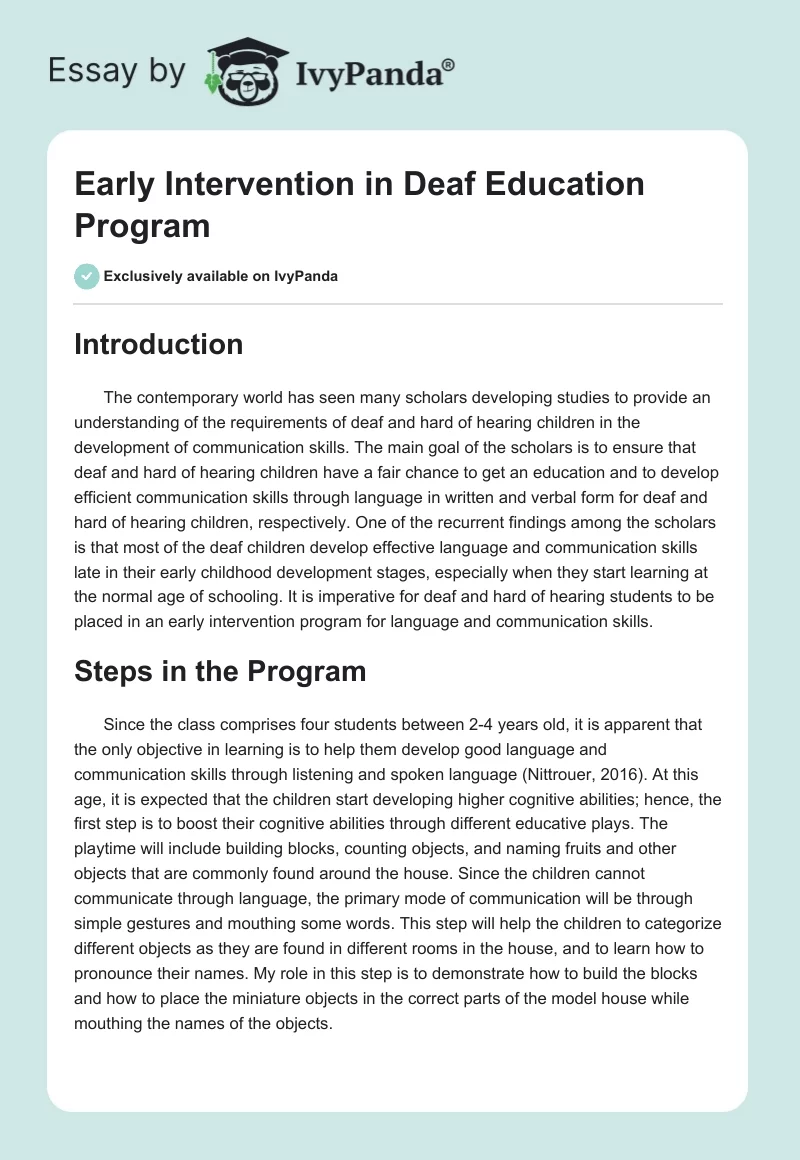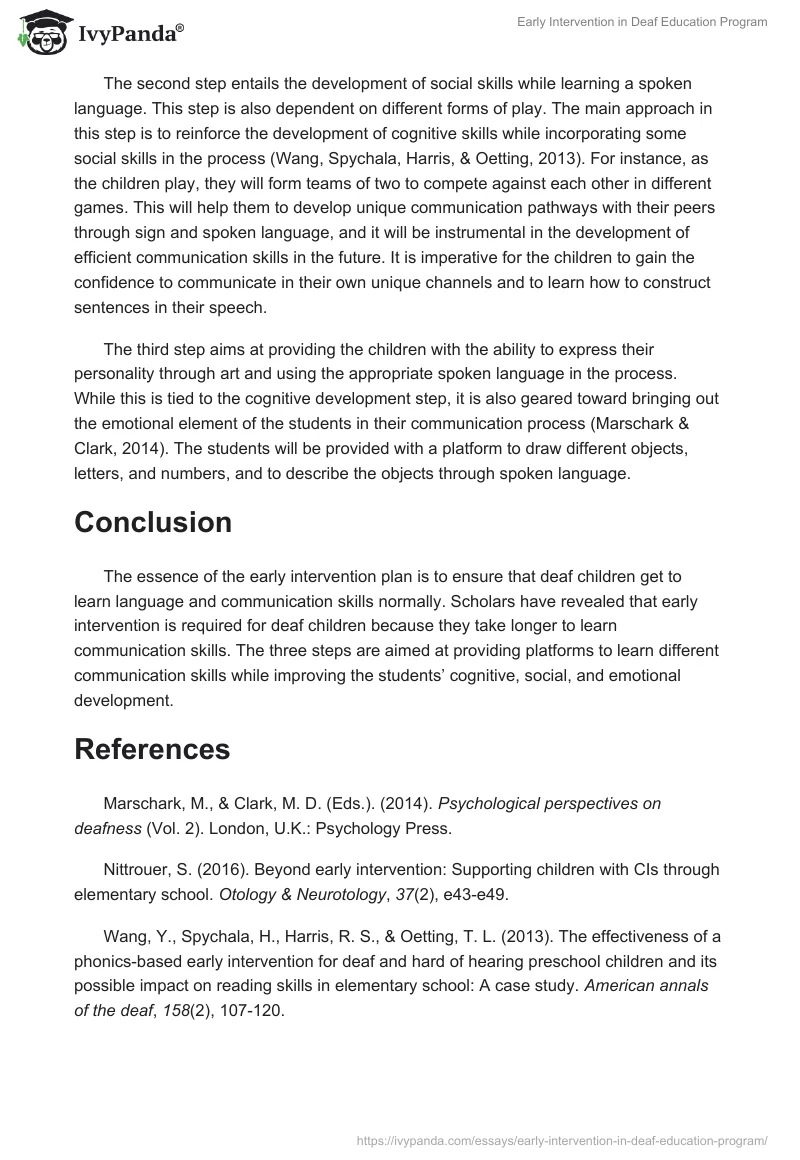Introduction
The contemporary world has seen many scholars developing studies to provide an understanding of the requirements of deaf and hard of hearing children in the development of communication skills. The main goal of the scholars is to ensure that deaf and hard of hearing children have a fair chance to get an education and to develop efficient communication skills through language in written and verbal form for deaf and hard of hearing children, respectively. One of the recurrent findings among the scholars is that most of the deaf children develop effective language and communication skills late in their early childhood development stages, especially when they start learning at the normal age of schooling. It is imperative for deaf and hard of hearing students to be placed in an early intervention program for language and communication skills.
Steps in the Program
Since the class comprises four students between 2-4 years old, it is apparent that the only objective in learning is to help them develop good language and communication skills through listening and spoken language (Nittrouer, 2016). At this age, it is expected that the children start developing higher cognitive abilities; hence, the first step is to boost their cognitive abilities through different educative plays. The playtime will include building blocks, counting objects, and naming fruits and other objects that are commonly found around the house. Since the children cannot communicate through language, the primary mode of communication will be through simple gestures and mouthing some words. This step will help the children to categorize different objects as they are found in different rooms in the house, and to learn how to pronounce their names. My role in this step is to demonstrate how to build the blocks and how to place the miniature objects in the correct parts of the model house while mouthing the names of the objects.
The second step entails the development of social skills while learning a spoken language. This step is also dependent on different forms of play. The main approach in this step is to reinforce the development of cognitive skills while incorporating some social skills in the process (Wang, Spychala, Harris, & Oetting, 2013). For instance, as the children play, they will form teams of two to compete against each other in different games. This will help them to develop unique communication pathways with their peers through sign and spoken language, and it will be instrumental in the development of efficient communication skills in the future. It is imperative for the children to gain the confidence to communicate in their own unique channels and to learn how to construct sentences in their speech.
The third step aims at providing the children with the ability to express their personality through art and using the appropriate spoken language in the process. While this is tied to the cognitive development step, it is also geared toward bringing out the emotional element of the students in their communication process (Marschark & Clark, 2014). The students will be provided with a platform to draw different objects, letters, and numbers, and to describe the objects through spoken language.
Conclusion
The essence of the early intervention plan is to ensure that deaf children get to learn language and communication skills normally. Scholars have revealed that early intervention is required for deaf children because they take longer to learn communication skills. The three steps are aimed at providing platforms to learn different communication skills while improving the students’ cognitive, social, and emotional development.
References
Marschark, M., & Clark, M. D. (Eds.). (2014). Psychological perspectives on deafness (Vol. 2). London, U.K.: Psychology Press.
Nittrouer, S. (2016). Beyond early intervention: Supporting children with CIs through elementary school. Otology & Neurotology, 37(2), e43-e49.
Wang, Y., Spychala, H., Harris, R. S., & Oetting, T. L. (2013). The effectiveness of a phonics-based early intervention for deaf and hard of hearing preschool children and its possible impact on reading skills in elementary school: A case study. American annals of the deaf, 158(2), 107-120.


